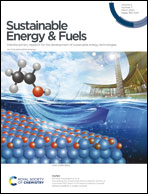Performance of electrode-supported silica membrane separators in lithium-ion batteries
Abstract
Commercially used polymer separators for lithium-ion batteries are inherently flammable and their reliability is limited to specific temperatures. The electrode-supported alumina separator shows good cell performance with improved safety. However, alumina is heavier than polymer separators and thus has a lower weight-based energy density. This paper reports synthesis and characterization of a lighter and low-cost silica (quartz) membrane separator for lithium-ion batteries and its performance in comparison with alumina separators. Thin (40 μm) quartz silica films can be readily coated on a Li4Ti5O12 (LTO) electrode by the blade-coating method from a quartz silica slurry due to its more favorable particle shape and matching zeta-potential as compared to alumina. A new infiltration method shows that quartz silica separators exhibit better electrolyte wettability than alumina and polypropylene (PP) separators. LTO/Li cells with quartz silica, alumina and PP separators exhibit similar cyclability indicating that the quartz silica separator is inert to the cell internals. However, the EIS results show that the quartz silica separators have a better charge transfer rate and lower SEI resistance compared to the cells with the alumina and PP separators. The results demonstrate that the quartz silica separator is more favorable inorganic material as the membrane separator for safer, higher energy density and better performing lithium-ion batteries.



 Please wait while we load your content...
Please wait while we load your content...